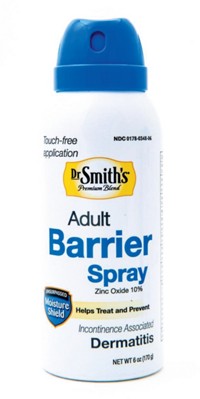Advertisement
Grab your lab coat. Let's get started
Welcome!
Welcome!
Create an account below to get 6 C&EN articles per month, receive newsletters and more - all free.
It seems this is your first time logging in online. Please enter the following information to continue.
As an ACS member you automatically get access to this site. All we need is few more details to create your reading experience.
Not you? Sign in with a different account.
Not you? Sign in with a different account.
ERROR 1
ERROR 1
ERROR 2
ERROR 2
ERROR 2
ERROR 2
ERROR 2
Password and Confirm password must match.
If you have an ACS member number, please enter it here so we can link this account to your membership. (optional)
ERROR 2
ACS values your privacy. By submitting your information, you are gaining access to C&EN and subscribing to our weekly newsletter. We use the information you provide to make your reading experience better, and we will never sell your data to third party members.
Environment
Patent Picks: New Propellant Technologies
A look at recent patenting activity in environmentally friendly propellants, brought to you by C&EN and CAS
by Mitch André Garcia
November 30, 2015
| A version of this story appeared in
Volume 93, Issue 47

Chemists and chemistry students: Follow key developments connected to the Paris climate change meeting here.
Aerosol spray cans expel their contents with the help of volatile small molecules called propellants. Today’s cans no longer contain ozone-depleting chlorofluorocarbons and instead rely on ozone-friendly hydrofluorocarbons (HFCs). However, scientists now worry about the global warming potential of current-generation HFC propellants. Earlier this year, the Environmental Protection Agency banned three HFCs that have long atmospheric lifetimes and high global warming potentials. Additionally, the European Union has begun mandating that companies phase out environmentally harmful HFCs in their products. To help propellants firms meet these new requirements, several chemical manufacturers are developing HFC formulations that have less negative effects on the environment. Here, we highlight three advances in technologies using environmentally friendly propellants, from the databases of Chemical Abstracts Service (CAS).
Hydrofluoroolefins (HFOs) boast three environmentally friendly features: They readily degrade in the troposphere, exhibit a low global warming potential, and have near-zero impact on the ozone layer. Although HFOs are already used as propellants in aerosol cans and as heat-transfer fluids in refrigerators, they are chemically unstable relative to hydrofluorocarbons because of the presence of a C=C double bond. A recent patent from Sri R. Seshadri, Laurent Abbas, Brent L. Van Horn, and coworkers from Arkema describes using stabilizers to inhibit degradation of HFOs, such as HFO-1225ye, during storage and handling (WO 2015126662). They selected stabilizing agents, including combinations of hydroquinone, limonene, and nitromethane, that could scavenge radicals and oxygen species, as well as inhibit polymerization. Although the stabilizers protect the HFOs when in use, they don’t slow degradation of HFOs once released into the atmosphere, Arkema reports in the filing. The company states that the stabilizers were most effective at concentrations between 100 and 1,000 ppm. In a statement on their website, Arkema says it is dedicating significant resources to develop HFOs as their fourth-generation refrigerant cooling liquid because of the compounds’ overall energy efficiency and low global warming potential.
About 300 million people around the world suffer from chronic obstructive pulmonary disease, a condition that causes poor airflow in the lungs. COPD patients often rely on inhalers that deliver long-acting bronchodilators, such as tiotropium, to improve their breathing. Inhalers use hydrofluorocarbon (HFC) propellants to expel their drugs because older propellants based on chlorofluorocarbons harm the environment. Tiotropium is notoriously moisture-sensitive, but it’s usually formulated in water or alcohol solvents, so manufacturers add small amounts of mineral acid to slow the degradation process. But these mineral acids can increase the toxicity of the formulation. Researchers at Cipla found that using HFC-227 as the propellant and as the solvent for tiotropium improved the drug’s stability compared with other aqueous formulations and avoided the need for a mineral acid (US 20150250713). In India, Cipla is currently selling a metered-dose inhaler, trade name Triohale, that uses HFC-227 as a propellant to deliver a trio of COPD drugs, including tiotropium.
Aerosol dusters, also called canned air, have been around since the 1960s. These cans don’t actually contain any air. Instead, they currently use nonflammable hydrofluorocarbon propellants, such as HFC-134a. But HFC-134a has a problem: It has a high global warming potential. And other HFCs with lower global warming potentials tend to be flammable and toxic. Montfort A. Johnsen, a 90-year-old veteran of the aerosol industry, may have invented a solution by combining two nonflammable hydrofluoroolefins (HFOs). The Illinois-based entrepreneur uses a tetrafluoropropene, known as HFO-1234ze, as the propellant and a hexafluorobutene, known as HFO-1336mzz, as the solvent for his air duster (US 20140284516). In the filing, Johnsen argues that his aerosol duster formulation should provide ultimate safety when used around ignition sources, while also not harming the environment.
↑ Top
Jump to Topics:
- Stabilizing Hydrofluoroolefins
- Environmentally Friendly Inhaler For COPD
- A Totally Nonflammable Aerosol Duster
Mitch Garcia wrote this month’s PatentPicks in collaboration with CAS. This feature reports on trends CAS scientists observe from patents in CAS databases. Please send comments and suggestions to patentpicks@acs.org.






Join the conversation
Contact the reporter
Submit a Letter to the Editor for publication
Engage with us on Twitter